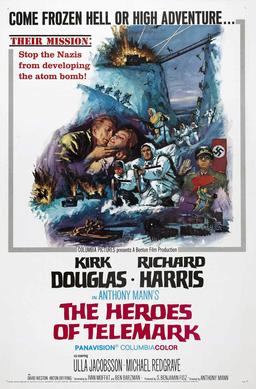MAYBANK, John W (#242)
#242
Lieutenant John W MAYBANK
Royal New Zealand Naval Volunteer Reserve
Alan Pollock’s Rough Notes:
A work in progress – the fuller biographies will emerge in due course: please sign up to the Newsletter (bottom of the page) and we’ll let you know when we’ve done more justice in writing up our extraordinary signatories.
Lieutenant John W MAYBANK RNZNVR: for the NEW ZEALAND and COMMONWEALTH contribution to the ROYAL NAVY, here a “Hostilities Only” pilot on CORSAIRS, who joined the BRITISH PACIFIC FLEET after converting on to CORSAIRS in CEYLON, firstly in 1830 SOUADRON.
John particularly remembered a strike against an island radar base off FORMOSA and how useful the mix of bombing and strafing was – also completing a four hour sortie to be diverted on to VICTORIOUS, only to be told half way through his post flight meal, that the section had to go off to do another strike on the same targets.
John then crossed over to 1834 SQUADRON (Lt Cdr J G BALDWIN DSC RN) in HMS VICTORIOUS (Leyte Gulf 26 Apr 1945) and was then on the other TASK FORCE 37 to 11 Auq 1945 – this was the rotation of the Third and Fifth Fleet for intense combat duty periods in the front line forward sea areas, with their massive FLEET TRAINS stretching back thousands of miles; his striking memories of flying over Japan from June was the lack of major roads, with the infrastructure seeming to exist on increasingly vulnerable air, sea and rail links; 1834’s main target priorities were again COUNTER AIR with visual tactical reconnaissance important, with secondary strikes against SHIPPING and whatever LOCOMOTIVES or TRAINS could be seen, using a variable weapon load of BOMBS or NAPALM and almost invariably full GUNS & ammunition.

The Guns of Navarone
JOHN’s father had been in the NZ EXPEDITIONARY FORCE in WW1 and his Uncle JOHN, commissioned in the field, had been killed on 26Sepl6 by a ricochet, with his Father staying in the NZ TERRITORIAL ARMY as an Instructor; crossing the Atlantic in the QUEEN MARY for his basic training up in Kingston, Ontario, John MAYBANK was on the same ship & was briefly to meet and see PM Winston CHURCHILL, CAS Sir Charles PORTAL & Brigadier Orde WINGATE going out for the QUEBEC CONFERENCE; he returw4to ERROL for Master & YEOVILTON for Wildcat & Martlet training; he went out to Alexandria in the Battleship KING GEORGE V & saw a 6″ Bombardment of Milos with an Able Seaman on board too, who was to later write “The Guns of Navarone” … Alastair Maclean.
1830 SOUADRON then: had previously been in Apr44 attacks at SABANG & May SURABAYA, Andaman in June & SABANG Aug 1944; their ex-CO, Lt Cdr (A) A M “Mike” TRITTON DSC** RNVR, became the new 15th NAVAL AIR WING Leader to replace Lt Cdr (A) R J “Dickie” CORK DSO DSC (originally a DFC, altered by the Admiralty!) of 242 SQN HURRICANES in the BATTLE of BRITAIN & 880 SQN in FURIOUS & INDOMITABLE (MADAGASCAR in May42 & PEDESTAL in 11-13 Aug 1942, the biggest MALTA CONVOY of all) & with at least 10 enemy a/c destroyed, then 759, 611 & Fighter Leaders School, who was killed, at low fuel state, on 14 Apr 1944 in a midair collision after wave off.
1830 SQUADRON worked up at TRINCOMALEE & NOWRA (near JERVIS BAY, New South Wales) flying on to HMS ILLUSTRIOUS on 9Feb45 to prepare for the intensive strikes of 26Mar-l5Apr45 at SAKISHIMA Gunto, including two days of strafing ISHIGAKI, then FORMOSA, in TASK FORCE 57.
The Command chain went up through Rear-Adm Sir Philip VIAN i/c Carrier Operations reporting to Vice-Adm Sir Bernard RAWLINGS at sea for the BRITISH PACIFIC FLEET Commander. Admiral Sir Bruce FRASER (previously C-in-C HOME FLEET then EASTERN FLEET), then in turn to the FIFTH FLEET COMMANDER USN Admiral SPRUANCE, victor of the critical BATTLES of MIDWAY & PHILIPPINES SEA, who reported to Fleet Admiral Chester NIMITZ, whose VJ-DAY COMMAND totally neqrly.two million men, 6,000 SHIPS and 15,000 AIRCRAFT.
AIRCRAFT STRATEGIC CONTEXT:
The British Chiefs of Staff even more and earlier than Prime Minister Winston CHURCHILL were insistent that UK forces should play a major part in the fall of JAPAN, as soon as resources could be spared from the ATLANTIC & MEDITERRANEAN theatres.
The EAST INDIES FLEET’s sea power in the INDIAN OCEAN had dramatically reduced Japan’s use of the sea lanes to BURMA from South East Asia. Japanese built airfields were strung out along the islands between CHINA via FORMOSA, RYUKYU ISLANDS,& OKINAWA and IWO JIMA to Japan, and also via FORMOSA and the PHILIPPINES to BORNEO & SINGAPORE or NEW GUINEA & the SOLOMONS, therefore it was a strategic imperative to strangle any potential reinforcement of Japanese Air strength from the coming Battles and Beachheads or OKINAWA and IWO JIMA – this was the importance of the SAKISHIMA GUNTO and FORMOSA STRIKES, with inevitably high losses on the COUNTER AIR against high value Japanese airfields and other targets. 1830 would form up after leaving the Carrier and found “four aircraft” strikes best, often attacking out of the sun in wide spread from 9,000 feet.




